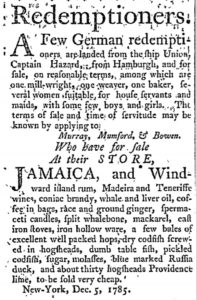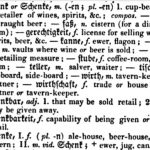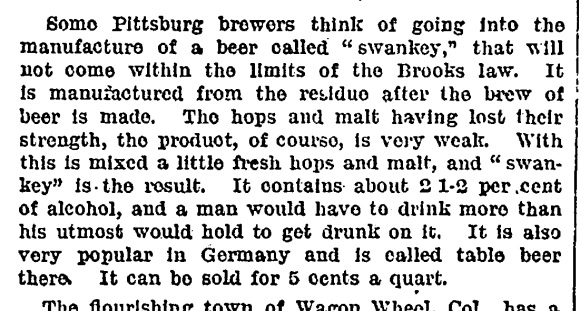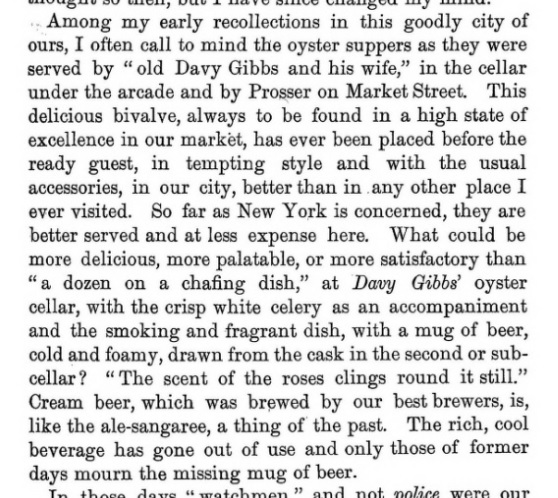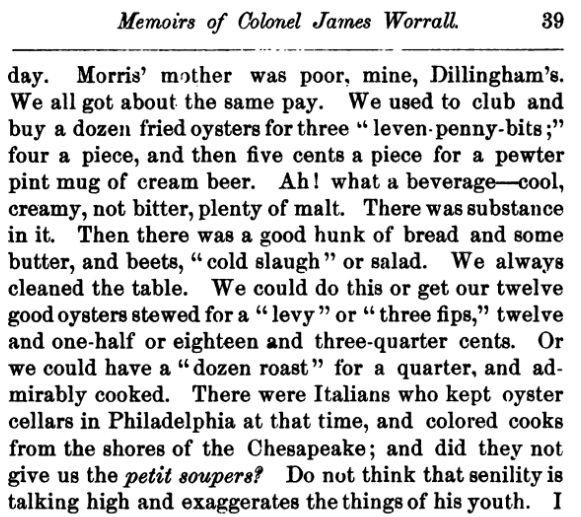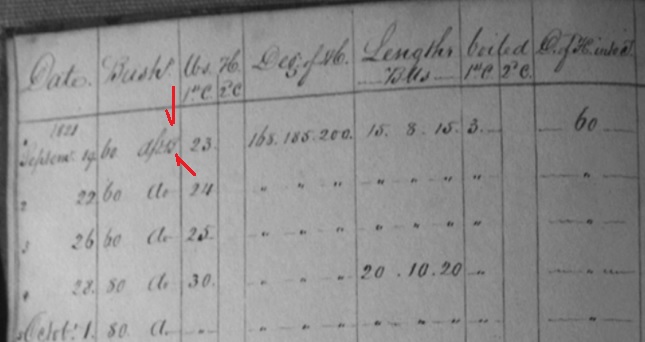Jumping right into it, last Friday’s cartoon strip, a snippet of which site above, in Pellicle by Dave Bailey mocking craft brewery culture was something of a milestone, a bookending of sorts finally… finally confirming those inside the bubble understand what the greater world knew in 2014 when that New Yorker cover of the hipster craft beer bar was published.* The details of all the embarassing characteristics that Bailey notes as he roasts craft culture were not so publicly discussed back in 2014- even if they were obviously known to those present and paying any attention. We are told that the past is a foreign country: they do things differently there but we perhaps forget how, even over one short decade, how quickly those differences may develop.
Fortunately, Boak and Bailey** have saved you all the need to look back to through this blog’s archives just there to the right to trace all the changes which arouse at least in the UK during those intervening times. They’ve provided us with a real gem of an update on their book Brew Britannia also, conveniently, published in 2014. It’s a beast of a bit but I am not going to ruin it for you so much as, I hope, give you reason to go dive into the full +10,000 word essay:
This long post is an attempt to fill in some of the gaps and hold ourselves to account: what did we get right, what did we get wrong, and what took us totally by surprise? More importantly, it’s about gaining some perspective. It’s easy to mistake the fact that we personally have become older and more jaded to mean that there has been a decline in the quality and vibrancy of the beer scene. Maybe there has, maybe there hasn’t – but there must be some objective facts we can use to test our gut feelings. We know other people have different perspectives, though, so we’ve also asked as many people as possible for their thoughts.
To answer all those questions, B+B applied their list of eleven indicators from 2013 of whether a community has a healthy beer culture and drew some thoughtful conclusions. Go have a look.
Speaking of lists, Jeff wrote one this week that got me thinking, too. It was a list of his top ten beer drinking experiences. I would re-arrange their order, kick a few out and add some others but the exercise is quite interesting. Consider his #10 “In the first half of a sporting event in which you are not deeply invested”:
Sporting events are festive affairs, and drinking a beer early in a game helps elevate the sense of occasion. It builds a mood of camaraderie, binding the watchers in the clink of glass. The beer itself tastes of promise—of the next couple hours, of a win, of greasy food and more beer. By the second half of any sporting event (later innings in baseball, third period in hockey, etc), the drinking event has become a sporting event and attention turns fixedly to the game. Ah, but those first minutes…
See, I see that differently – not as a linear experience but one that turns on the flow of each game. Reminded me of a 1987 Canada Cup pre-tourney hockey game between Canada and the US that I watched with pals. We ended up (like UTTER MORONS) sitting in the bar during the third period drinking beer with our backs turned to the ice because Canada was up something like double digits to diddle over the Americans. Why were we morons? Because Gretsky and Lemieux were on the ice at the same time. And between 27% to 73% of all the other hockey players who I’d ever worshiped were also right there playing. But, you know, there was beer over there on the concourse… soooooo…
Martin marked the fifth anniversary of the passing of his friend Richard Coldwell with a bit of a public service – a report on the gumwashery of Thornbridge‘s brewing of Jaipur on their new old fashioned Burton Unions saved from wreckers… or perhaps the storage locker… earlier this year:
Richard wasn’t a great fan of Burton’s beers, but would have had intelligent things to say about the Thornbridge “saving” of the Burton Unions this year. You’ll know I couldn’t care less about history or the brewing process, and argue the quality of the publican is by far the biggest determinant of the quality of the beer in your glass (see : the improvement of Bass in the hands of a smaller number of committed landlords). On Saturday, back in Sheff from Italy, I thought I’d better taste the new Jaipur at my nearest Thornbridge pub…
He approved. As did John aka TBN himself when he first encountered his first fonio:
Have you heard of fonio? If you haven’t yet, you will, at least according to Brooklyn Brewery’s Garrett Oliver who has become an advocate for this climate-resistant African grain. Its most important attribute is that you can make beer from it, which will be terribly useful once the Earth decides it can’t do barley any more. Garrett had come to St James’s Gate to make a fonio-based collaboration beer, although that won’t be out until much later this year. He also brought over some beers of his own to share.
He liked it too. You know, I am not sure whether “quite a shock; incredibly soft and chewy” or “if it’s saving the planet, then all the better” is higher praise. Clearly both worth seeking out.
Ron has been looking for a new local and last Saturday found himself with his gang checking out a really good looking stop in Amsterdam called Soundgarden – offering us a pretty good photo essay:
Soundgarden is slightly unusual as it backs directly onto a canal. Which gives it a nice view. And also means that customers can arrive by boat. Which is exactly what happened not long after we got there. How cool is that? Unlike the garden itself. Which was pretty warm. Too warm for my liking. And with almost no shade. That’s a mark against the pub. The inside was totally empty. Which meant I could take lots of nice photos without people getting in the way. I won’t bother trying to describe how it looks. I’ll let the photos do the talking.
Similarly – except a whole country away – Franz Hofer posted a study of a beer garden in Munich with this startling geolocating sentence:
Once the location of the smallest royal blacksmith, the Swiss-style hut at the edge of the estate allegedly served as Ludwig and Lola’s love den.
 Now, let’s set all that traipsing wandering about the taverns and such aside. We live in a real world and many in the UK today will be needing one or celebrrating with one as it is election day. One poll by More in Common in particular caught my eye when it hit the sosh-meeds. It detailed voting intentions according to a fabulous sixteen different favourite clinky-drinkies. So we learn that cider drinkers prefer Labour by an advantage of only half that of IPA fans. Almost twice as many SNP voters prefer shandy to whisky. But Sherry drinkers? Totes Tory. They’ll be sucking back the sticky raisiny toffee gak tonight!
Now, let’s set all that traipsing wandering about the taverns and such aside. We live in a real world and many in the UK today will be needing one or celebrrating with one as it is election day. One poll by More in Common in particular caught my eye when it hit the sosh-meeds. It detailed voting intentions according to a fabulous sixteen different favourite clinky-drinkies. So we learn that cider drinkers prefer Labour by an advantage of only half that of IPA fans. Almost twice as many SNP voters prefer shandy to whisky. But Sherry drinkers? Totes Tory. They’ll be sucking back the sticky raisiny toffee gak tonight!
Speaking of the unhappy, The Times had an extended investigation into the new eco-lairds of Scotland including, as noted hereabouts last April, one Mr. Watts semi-formerly of BrewDog and his failed forestry project:
At Kinrara, Dave Morris, 77, of the Parkswatch Scotland blog, points to the dead sticks which should have grown into great Scots pines. “We should not be planting in the uplands,” he said. “There is inevitable disturbance of the soils which brings peaty ground to the surface, leading to carbon loss for decades.” Morris is furious that BrewDog received nearly £700,000 of money for the project, arguing that the land should have been left to regenerate naturally. A few metres away from the dead and dying saplings, young trees are thriving, pushing their way through the heather. Without the chomping teeth of deer or sheep to tear them down, these trees are growing naturally. All it needed was a fence to keep the animals away.
I’ve mentioned from once in a while that I worked teaching English in Kołobrzeg, Poland back in 1991 but probably didn’t mention the time I watched a construction crew out the window of the classroom. Two things caught my eye. First, they used the trunks of pine trees, bark and all, as a form of embedded rebar as they poured the building’s concrete floors. “How long until that collapses?” I thought foreshadowing a future dabbling in construction law. Second, there was a regular flow of empty beer bottles crashing down upon the work site’s ground level many floors below as the crew kept themselves… hydrated all day long. “Lordy… Lordy…” thought I. I recalled this scene when I read the news about the neghbouring Czechs cutting back on their intake as reported by Jessica Mason:
The average number of beers drunk per capita in 2023 was 256 beers per head, which is equal to approximately 128 litres, reflecting similar figures to the lowest average consumption figures during the pandemic restrictions and the lowest record number in 1963. Radio Prague International (RPI) also highlighted how in 2005, beer consumption reached a record high when Czechs consumed 163.5 litres, or 327 beers per head. Consumption per person was 153 litres in 2009 holding at 140 litres for nearly a decade before falling to 129 litres in 2021… In 2021, the Czech Statistics Office estimated that beer consumption that year was the lowest since 1989 when it had been at around 151 litres per person and even jumped above 160 litres momentarily in the 90s.
So… is that really all that bad a thing for Czechs? I have consulted Max‘s dispatches for clues.
Pellicle‘s feature this week is a piece on a pub called The Swan with Two Necks by Katie, which contains some great detail of the life of a license holder living under pub chain owership thirty years ago:
One day in 1992, they received a letter welcoming them to the PubMaster group, their only notification that Whitbread had sold their pub. After a while of trying to acclimatise to their new owners, it seemed like they might need to move on again. “We just didn’t get on with PubMaster,” Steve says. “There was such a reduced selection of beer, restrictions on what we could and couldn’t buy, it was just an aggravation all the time. It just wasn’t what we set out to do.” PubMaster agreed to talk with them to see how they could help improve the situation. Before the talk was had, Christine and Steve received another letter. It read: ‘Welcome to Jennings’… “They came to me and said they had a tenancy agreement with Whitbread through PubMaster, and that they wanted me to change from partial to full-time leasehold with no compensation. And then PubMaster was bought by Cafe Inns, who were even worse.
Philadelphia magazine had an article this week on an unexpected subject, the city’s obsession with that most basic of drinks that turned out to be well suited for the most basic of bars. The drink? Twisted Tea:
The price point for Twisted Tea was lower than that for any beer they were selling, says Keenan’s owner and Grays Ferry native Scott Keenan, meaning he could sling Teas for two bucks and still turn a decent profit. Combine the price with the drink’s lack of carbonation — if you’re reading this and have somehow never been down the Shore in your early 20s, that translates into “dangerously drinkable” — and Twisted Tea was primed to explode. “It just ran like wildfire,” Keenan recalls. The numbers were eye-watering: Every week that summer, he’d sell between 350 and 500 cases of Twisted Tea. Reread that sentence, then do the math. Every week, one bar in North Wildwood was slinging between 8,400 and 12,000 bottles of Twisted Tea, outselling everything but Miller Lite.
Finally, some wise words from Jamie Goode on the subject of the role of a critic when it comes to wine which are worth thinking about in relation to good beer, too:
…what people come to a professional for is an honest opinion, built on solid tasting experience and good taste. They are looking for the model critic as described by David Hume: someone free of bias, with good sensitivity, and good aesthetic sense. Low involvement consumers are well served by the wines they are being sold. High involvement consumers – the people who are listening to the critics – are well served by critical opinion. That there might be a discrepancy is not a problem: this will always exist in any field, whether it is food, or fashion, or art, or movies. Popular taste often departs from critical opinion, but this doesn’t mean that the critics are out of touch or irrelevant. They are all part of a larger ecosystem and are doing their job. A food critic concentrating on fast food and large chains is entirely useless. So is a wine critic endorsing and second guessing the tastes of people with no real interest in wine who just want something cheap that doesn’t taste bad.
Does beer have those principles? Critical opinion writers? Or just… you know… We can think about the question for a while before we meet again next time. Send in your essays on that point by Tuesday at 5 pm. Marks deducted for late submissions.
And with that… now we roll the credits… well, the credits, the stats the recommends and the footnotes and the many ways to find good reading about beer and similar stuff via any number of social media and other forms of comms connections.*** Want to keep up with the news before next Thursday? Check out Boak and Bailey every Saturday and Stan back each Monday. Elsewhere go look at then listen to Lew’s podcast. And get your emailed issue of Episodes of my Pub Life by this year’s model citizen David Jesudason on the odd Fridays. And Phil Mellows is at the BritishBeerBreaks. Once a month, Will Hawkes issues his London Beer City newsletter and do sign up for Katie’s now revitalised and wonderful newsletter, The Gulp, too. Ben’s Beer and Badword is back with all the sweary Mary he can think of! And check out the Atlantic Canada Beer Blog‘s weekly roundup. There is new reading at The Glass which is going back to being a blog in this weeks best medium as message news. Any more? Yes! Check to see the highly recommended Beer Ladies Podcast. That’s quite good. And the BOAS podcast for the bro-ly. And the long standing Beervana podcast …except they have now stood down. Plus We Are Beer People. The Boys Are From Märzen podcast appears suspended as does BeerEdge, too. But not Ontario’s own A Quick Beer. There is more from DaftAboutCraft‘s podcast, too. All About Beer has introduced a few podcasts… but some may be losing steam. And there’s also The Perfect Pour. Plus follow the venerable Full Pint podcast. And the Craft Beer Channel on Youtube. The Moon Under Water… is gone which is not surprising as the ask was $10 a month. Pete Brown’s costs a fifth of that but is writing for 47 readers over there. There was also the Beer O’clock Show but that was gone after a ten year run but returned renewed and here is the link! Errr… nope, it is gone again.
*Along with of course, the crowd pleasing cult classic The Unbearable Nonsense of Craft Beer – A Rant in Nine Acts of earlier that same year.
**Yes, yes – no relation.
***This week’s update on my own emotional rankings? Facebook still in first (given especially as it is focused on my 300 closest friends and family) then we have BlueSky (132) rising up to maybe… probably… likely pass Mastodon (929) in value… then the seemingly doomed trashy Twex (4,484) hovering somewhere well above my largely ignored Instagram (160), crap Threads (52) with Substack Notes (1) really dragging up the rear.




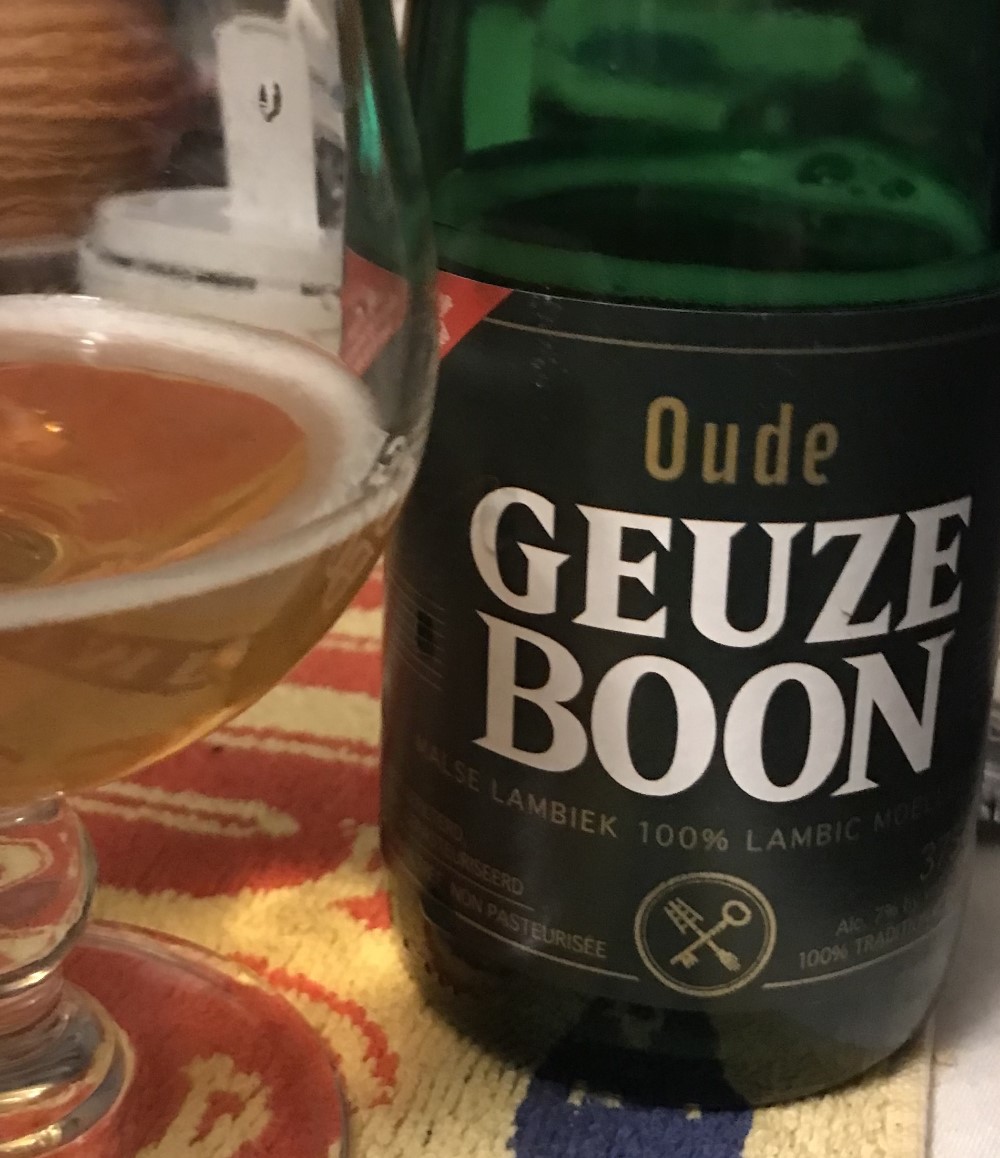

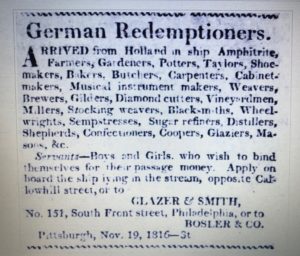 Over five years ago now I wrote the last of a
Over five years ago now I wrote the last of a 